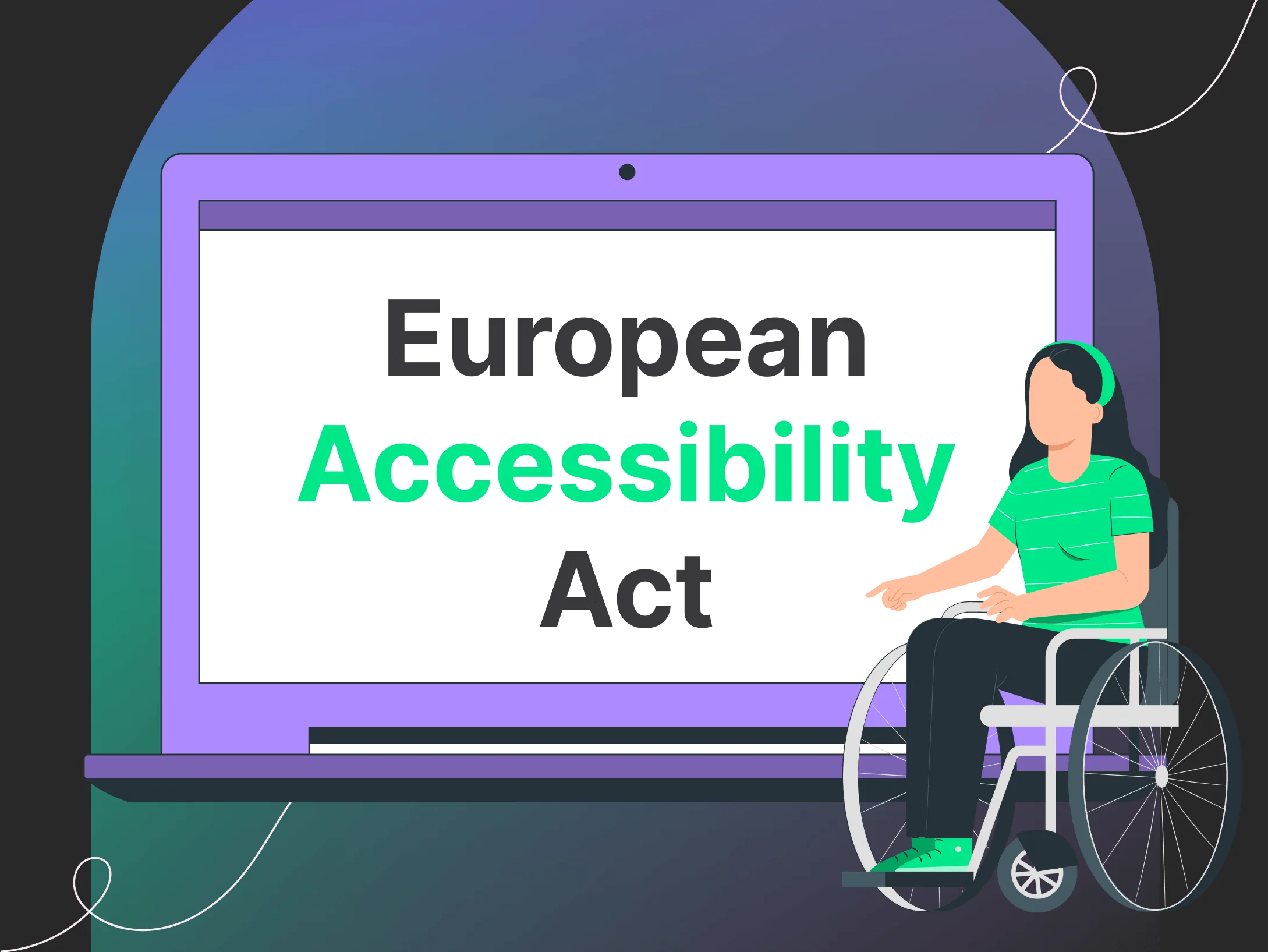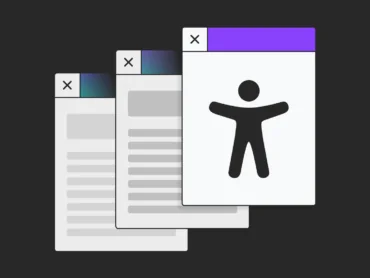European Accessibility Act: What It Is and Who It Affects

The European Accessibility Act (EAA) is set to reshape the digital and physical landscape across the EU, ensuring that products and services are accessible to all users, including people with disabilities. With the June 28, 2025 deadline fast approaching, businesses must adapt to these new regulations. But who does the EAA apply to, and what does compliance look like?
What Is the European Accessibility Act?
The European Accessibility Act (EAA) is a European Union (EU) directive that took effect in April 2019. Member states are required to implement the act fully by June 28, 2025. Its primary goal is to harmonize accessibility requirements across EU member states, facilitating the free movement of accessible products and services within the internal market. By establishing a standard set of rules, the EAA aims to enhance the availability of accessible products and services, benefiting individuals with disabilities and the elderly.
This directive covers many products and services, including computers, smartphones, e-books, televisions, banking services, e-commerce platforms, and public transport services.
While the EAA sets standard accessibility requirements, individual EU member states have the flexibility to extend its scope, introduce stricter regulations, or adjust enforcement mechanisms. Each country determines penalties for non-compliance, including fines or restrictions on product and service distribution.
Who Does the European Accessibility Act Apply To?
In Europe
The European Accessibility Act (EAA) applies primarily to businesses and organizations that provide certain products and services within the EU market. The directive aims to ensure that individuals with disabilities can access essential digital and physical services without barriers. The key industries affected include:
- E-commerce platforms – Online stores must ensure their websites, mobile apps, and payment systems are accessible.
- Banking and financial services – ATMs, banking apps, and online banking platforms must comply with accessibility standards.
- Electronic communication services – Telecommunication providers must offer accessible customer service and user-friendly interfaces.
- Transportation services – Ticket machines, travel information systems, and booking platforms must meet accessibility standards.
- Digital devices and software – Computers, smartphones, e-books, and operating systems must integrate accessibility features.
- Audiovisual media services – Televisions and related interfaces must support features like subtitles, screen readers, and voice commands.
However, microenterprises—defined as businesses employing fewer than 10 persons and with an annual turnover not exceeding €2 million—are exempt from these obligations.
EAA In Poland
In Poland, the European Accessibility Act (EAA) applies to several business categories, according to government information:
- Manufacturers – Companies that produce goods or commission production and sell under their brand.
- Authorized representatives – Entities designated by manufacturers to act on their behalf within the EU.
- Importers – Businesses based in the EU that introduce products from outside the European Union or EFTA to the EU market.
- Distributors – Companies that sell products within the market but are not manufacturers or importers.
- Service providers – Businesses offering services to consumers in the EU.
Each group is responsible for ensuring their products and services comply with accessibility requirements. This includes implementing accessible digital solutions, ensuring user-friendly physical products, and meeting design standards for people with disabilities.
While microenterprises—businesses with fewer than 10 employees and an annual turnover or total assets not exceeding €2 million—are exempt from these obligations, accessibility remains a valuable investment. Even small businesses can benefit from improved user experience, broader customer reach, and enhanced brand reputation by making their products and services more accessible.

Why Accessibility Matters
Accessibility is not just about compliance—it’s about creating an inclusive digital and physical world where everyone, regardless of ability, can fully participate. In the EU alone, around 101 million people live with disabilities. As the population ages, this number continues to grow. By ensuring accessibility, businesses and organizations remove barriers that might prevent people from using essential services, shopping online, or accessing digital content.
Beyond social responsibility, accessibility brings tangible business benefits. It enhances user experience, making websites, apps, and products easier to navigate for everyone—not just people with disabilities.
Accessibility also improves SEO, as search engines favor well-structured and readable content, leading to better rankings. Additionally, businesses that prioritize accessibility broaden their market reach, gaining a competitive advantage in an increasingly digital economy. Read more about why Web Accessibility matters and what WCAG is.
Consequences of Non-Compliance
Failure to meet accessibility requirements under the European Accessibility Act (EAA) can result in financial penalties and other regulatory actions. While the EAA sets the overarching legal framework, each EU member state determines its enforcement mechanisms and penalties for non-compliance. This means that businesses operating in multiple European countries must be aware of national-specific regulations and enforcement procedures.
Example: Penalties in Poland
In Poland, the responsibility for enforcing accessibility compliance falls under the State Fund for the Rehabilitation of Disabled Persons (PFRON) and relevant market surveillance authorities. If there is suspicion that a product or service does not meet accessibility requirements, these authorities can conduct an inspection at the company’s premises.
During the inspection, officials have the right to verify how a service is offered or provided, ensuring it meets accessibility standards, and assess whether products and services comply with legal accessibility requirements.
Financial penalties may be imposed if a company is found to be in violation. The amount of the fine is determined based on several factors, including:
- The extent of non-compliance and its severity.
- The number of inaccessible products or services.
- The number of people negatively affected by the inaccessibility.
The maximum fine cannot exceed either:
- 10 times the average salary in Poland,
- Or 10% of the company’s annual turnover from the previous year.
- Additionally, businesses may be required to cover the costs of accessibility inspections, further increasing the financial burden.
Beyond monetary fines, reputational damage, loss of customers, and potential restrictions on product distribution are additional risks for companies that fail to comply. Given the upcoming June 28, 2025 deadline, businesses should take proactive steps to ensure accessibility compliance and avoid these consequences.
Get Your Business Ready for EAA Compliance with Ambiscale
The European Accessibility Act is not just a legal requirement—it’s an opportunity to create a more inclusive, user-friendly digital experience for all. With the June 28, 2025 deadline approaching, businesses must act now to ensure compliance and avoid financial penalties, reputational risks, and accessibility-related service restrictions.
At Ambiscale, we specialize in web accessibility and can help your business navigate the complexities of EAA compliance. Our accessibility specialist will conduct a comprehensive audit of your website and identify areas that need improvement. After that, we can implement the necessary changes to meet WCAG standards.
By working with us, you ensure that your website is accessible, legally compliant, and optimized for all users—enhancing usability, improving SEO, and expanding your customer base. Don’t wait until the deadline approaches—get in touch with Ambiscale today, and let’s build an inclusive digital future together.




